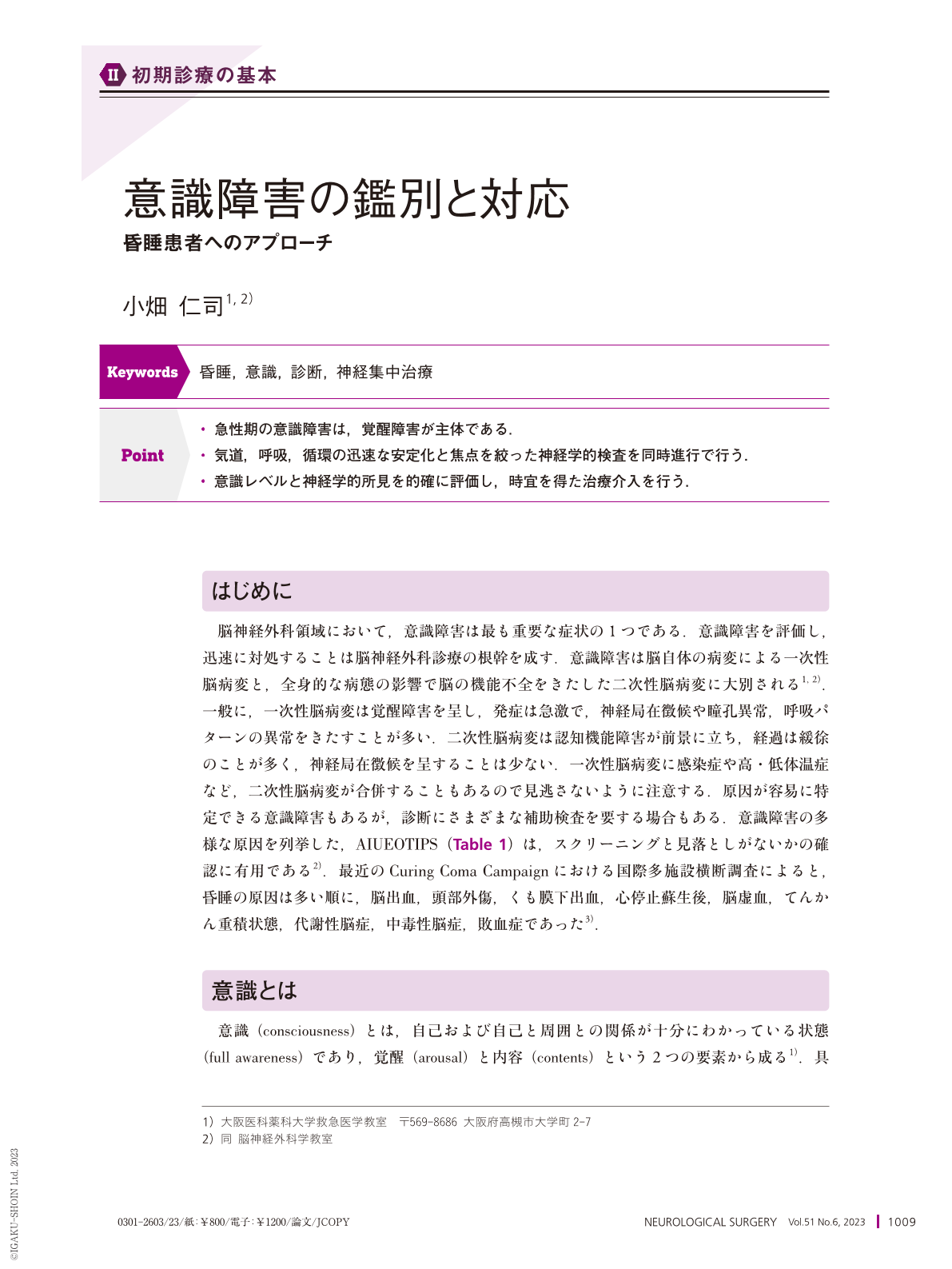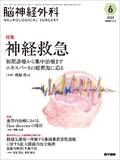Japanese
English
- 有料閲覧
- Abstract 文献概要
- 1ページ目 Look Inside
- 参考文献 Reference
Point
・急性期の意識障害は,覚醒障害が主体である.
・気道,呼吸,循環の迅速な安定化と焦点を絞った神経学的検査を同時進行で行う.
・意識レベルと神経学的所見を的確に評価し,時宜を得た治療介入を行う.
Disorders of consciousness are among the most common symptoms in neurosurgery. A coma is an acute dysfunction of the nervous system that governs arousal and awareness and represents a medical emergency. Prompt evaluation and treatment of comas are fundamental in clinical practice. The first step is stabilizing the airway, breathing, and circulation while protecting the cervical spine to prevent secondary neurological injury. Subsequently, a focused neurological examination is performed. The level of consciousness, brainstem reflexes, respiratory patterns, motor responses, and muscle tone should be evaluated. Any asymmetry should be carefully considered. Acute disturbances of consciousness primarily impair arousal. The Japan and Glasgow Coma Scales are the most commonly used. The Emergency Coma Scale was designed by incorporating the advantages of each. The Full Outline of UnResponsiveness score incorporates brainstem reflexes and breathing patterns. Clinicians must have an organized approach to detect remediable causes, prevent neurological injury, and determine a hierarchical course of diagnostic testing, treatments, and neuromonitoring.

Copyright © 2023, Igaku-Shoin Ltd. All rights reserved.


